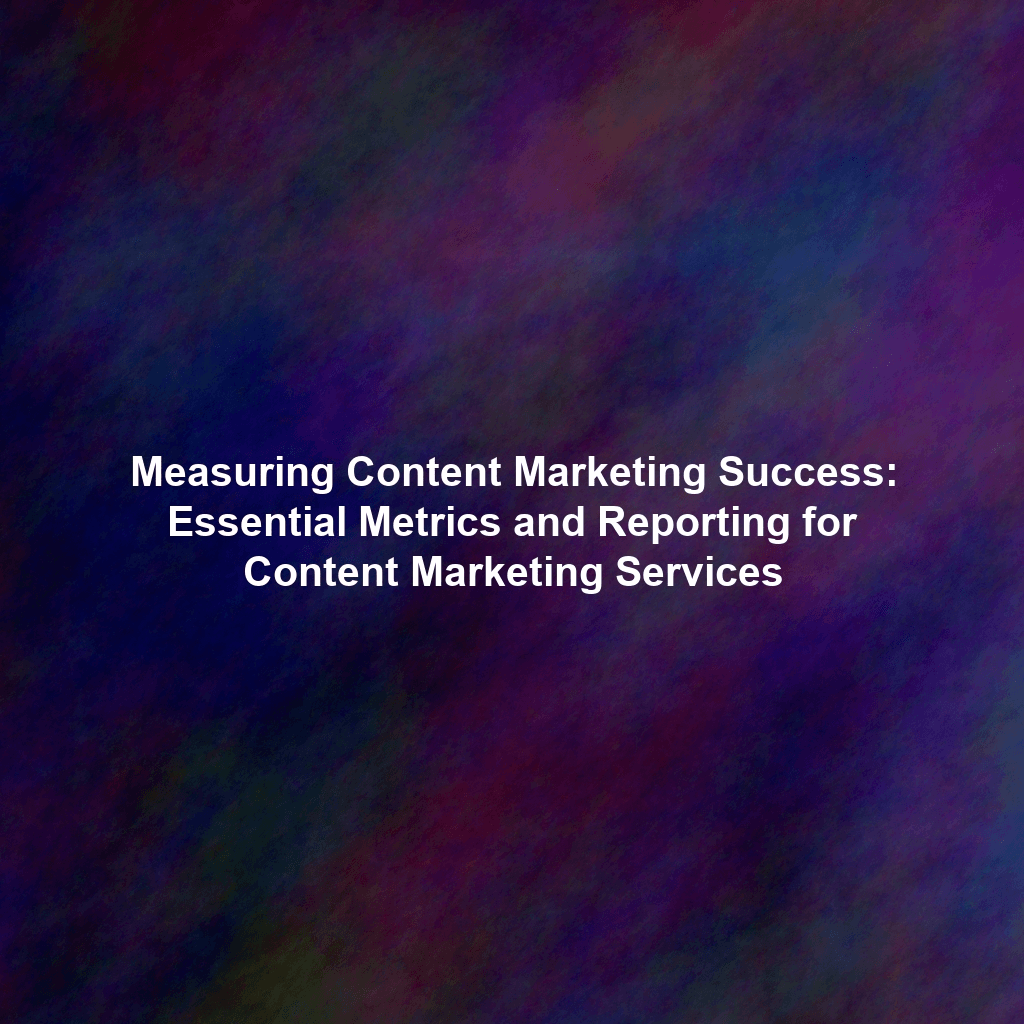Why Measuring Content Marketing Success Matters
Imagine launching a marketing campaign without tracking its performance. You’d be throwing resources into the void, unsure whether your efforts are yielding any results. The same applies to content marketing. Measuring your content’s performance provides crucial insights into:
- ROI Justification: Demonstrating the financial return on your content marketing investment.
- Strategy Optimization: Identifying what works and what doesn’t to refine your content strategy.
- Audience Understanding: Gaining a deeper understanding of your target audience’s preferences and behaviors.
- Improved Content Creation: Informing future content creation efforts with data-backed insights.
- Goal Alignment: Ensuring your content marketing activities align with your overall business objectives.
Key Performance Indicators (KPIs) for Content Marketing
The specific KPIs you track will depend on your business goals. However, some core metrics are universally valuable for measuring content marketing effectiveness. Here are some of the most important KPIs to consider:
Website Traffic
Website traffic is a foundational metric that indicates how well your content is attracting visitors. Track the following:
- Overall Traffic: The total number of visitors to your website.
- Organic Traffic: Visitors who arrive at your website through search engines. This highlights the effectiveness of your SEO efforts.
- Referral Traffic: Visitors who arrive from other websites, indicating the reach and authority of your content.
How to Track: Use tools like Google Analytics to monitor website traffic sources and trends.
Engagement Metrics
Engagement metrics reveal how actively your audience is interacting with your content. Key engagement metrics include:
- Time on Page: The average amount of time visitors spend on a page. Longer time on page suggests higher engagement.
- Bounce Rate: The percentage of visitors who leave your website after viewing only one page. A high bounce rate may indicate irrelevant or unengaging content.
- Pages per Session: The average number of pages a visitor views during a single session.
- Social Shares: The number of times your content is shared on social media platforms.
- Comments: The number of comments on your blog posts or other content.
How to Track: Google Analytics, social media analytics dashboards, and website analytics platforms provide engagement data.
Lead Generation
Lead generation is a critical KPI for businesses aiming to convert website visitors into potential customers. Track:
- Number of Leads: The total number of leads generated through content marketing efforts.
- Conversion Rate: The percentage of website visitors who become leads (e.g., by filling out a form or downloading an asset).
- Cost per Lead (CPL): The average cost of acquiring a lead through content marketing.
How to Track: Use marketing automation platforms like HubSpot, Marketo, or Pardot to track lead generation and conversion rates.
Sales and Revenue
Ultimately, content marketing should contribute to sales and revenue growth. Track:
- Sales Attributed to Content: The number of sales that can be directly attributed to content marketing efforts.
- Customer Lifetime Value (CLTV): The total revenue a customer is expected to generate throughout their relationship with your business. Understanding how content impacts CLTV can demonstrate its long-term value.
- Return on Investment (ROI): The overall return on your content marketing investment, calculated by dividing the profit generated by the cost of investment.
How to Track: Integrate your marketing automation platform with your CRM system (e.g., Salesforce) to track sales attribution and ROI.
Search Engine Rankings
For content to be effective, it needs to be visible in search engine results pages (SERPs). Track:
- Keyword Rankings: The position of your content for target keywords in search results.
- Organic Click-Through Rate (CTR): The percentage of users who click on your website link in search results.
How to Track: Use SEO tools like SEMrush, Ahrefs, or Moz to track keyword rankings and monitor organic CTR.
The Importance of Regular Reporting and Data Analysis
Tracking KPIs is only the first step. Regular reporting and data analysis are essential for understanding the story behind the numbers. This involves:
- Frequency: Generate reports on a regular basis (e.g., weekly, monthly, quarterly) to track progress and identify trends.
- Data Visualization: Present data in a clear and concise format using charts, graphs, and dashboards.
- Trend Analysis: Identify trends in your data to understand how your content is performing over time.
- Insight Generation: Extract actionable insights from your data to inform your content strategy.
- Actionable Recommendations: Provide clear recommendations based on your data analysis to improve content performance.
Examples of Reporting Dashboards and Tools
Numerous tools can help you create comprehensive reporting dashboards for content marketing:
- Google Analytics Dashboard: Customizable dashboards to visualize website traffic, engagement metrics, and conversion goals.
- HubSpot Marketing Hub: Comprehensive marketing automation platform with built-in reporting capabilities.
- SEMrush: SEO toolkit with reporting features for tracking keyword rankings, organic traffic, and competitor analysis.
- Tableau: Data visualization tool for creating interactive dashboards and reports.
- Google Data Studio: Free data visualization tool for creating custom dashboards from various data sources.
Consider tailoring your dashboards to display the most relevant information for your specific goals and stakeholders. A good dashboard should be easy to understand and provide actionable insights at a glance.
Data-Driven Decision-Making in Content Marketing
The ultimate goal of measuring content marketing success is to make data-driven decisions that optimize your strategy. Here are some examples of how data can inform your content decisions:
- Topic Selection: Identify trending topics and keywords with high search volume to inform your content calendar.
- Content Format: Determine which content formats (e.g., blog posts, videos, infographics) resonate most with your audience based on engagement metrics.
- Content Promotion: Optimize your content promotion strategy by identifying the most effective channels for reaching your target audience.
- Content Optimization: Improve your content based on data insights, such as keyword rankings, bounce rate, and conversion rates.
 Skip to content
Skip to content

